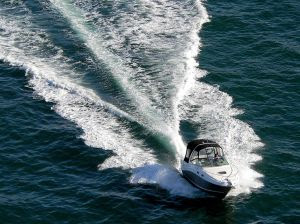With a week left before the IQP experience comes to an end, things are starting to wrap up.
Sunday, December 13, 2009
Project Update
With a week left before the IQP experience comes to an end, things are starting to wrap up.
Friday, December 11, 2009
Visualizing The Impacts
Here is the first video of many using our original time lapse and real time film to visualize the impact of the cruise ship industry on the city of Venice.
Thursday, December 10, 2009
Hydrodynamic Effects of Cruise Ships
When smaller ships reach a certain speed while traveling through the water, they will normally create a wake. A wake, by definition, is “The V shaped water that trails behind a boat, created by the boat's forward motion.” These wakes can beat against rock and dirt on the shore, causing them to erode.

Cruise ships only make these types of wakes at high speeds; at low speeds they will create a type of suction that is caused when the water in front of the boat is forced underneath the breaker by the movement and sheer displacement of the ship. The water pulled under the ship is then sent out under the back end of the ship in a sort of trailing wave that extends like a “V.”. This double whammy of effects caused by cruise ships passing is erosive, whether it’s the suction of water away from surrounding dirt and stone, or the wave after the passing of the boat that beats against said dirt and stone.
Cruise ships displace a lot of water. These gargantuan boats are essentially floating cities, having swimming pools to shopping centers to basketball courts to full sized gyms and 5 star dining. The way displacement works is that a large ship would displace the amount of water that essentially would fill it. The amount of the liquid that would fill the ship is referred to in units of tonnes. Wikipedia defines tonnes as follows:
“The spelling tonne has its origin in French. The term applied to the barrel of the largest size. In Old English the spelling was tunne, "cask" — a full cask about a meter high could easily weigh a tonne. The antiquated British wine cask volume measurement tun is close to a metric tonne in weight as it defines about 954 liters which for many commonly used liquids (aqueous solutions) approximates to as many kilograms.”
As previously stated, modern day cruise ships are quite large and thus displace large volumes of water. The largest cruise ship to have ever visited the city of Venice displaced an amazing 110,000 tonnes. Even more astounding is the displacement of the largest and most recent cruise ship: the M.S. Oasis has a displacement of a whopping 220,000 tonnes!
In Venice, cruise ships have to travel through the Giudecca Canal to reach the harbor. Since there is a chance of having one of these enormous cruise ships misjudging a turn or causing a catastrophic accident while traveling through the Giudecca on its own, all cruise ships that wish to dock at Venice’s port must be brought into port with the assistance of a tug boat. Some of the larger cruise ships actually require the use of two tug boats to help the ship navigate around the two bends in the Giudecca Canal.
Now picture Venice, where the main motorized means of transportation is by boat - there are a lot of wakes. Cruise ships are very heavy and displace so much water that having them dragged through the Giudecca canal at 5 knots (the speed at which they are allowed), causes a great amount of suction towards the ship and plenty of surrounding canals to pull water from. With all of this water being pulled in, the wave after the ship passes will be larger, causing even more erosion.
There is only one way in and one way out of Venice for these ships, so each would cause the erosion just described twice during their stay in Venice. With the city itself having been visited by over 500 cruise ships in 2008, it was dealt double that amount of erosive passes by the giant ships. With so much erosion caused by cruise ships alone, you forget to add to that all the erosion caused by regular boat travel and the fast ferries that visit Venice every day!







